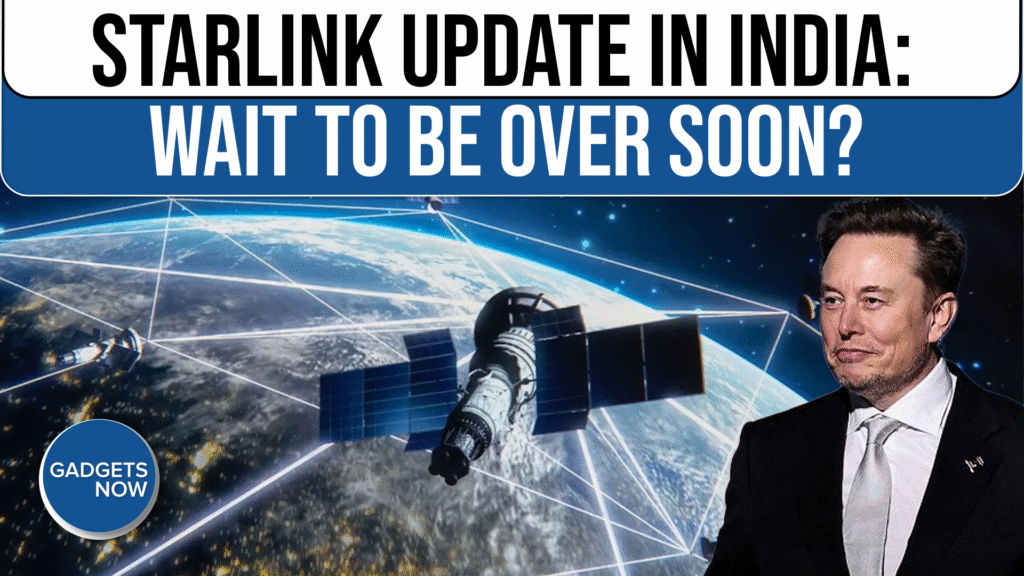The cosmos has long been a canvas for creatives who imagine a future where people live among the stars. Now, humanity stands at a pivotal juncture as the laborious, expensive and high-stakes process of attempting to convert such grand visions into reality is actually underway.
In the Western world, perhaps no one has more influence over how this future may be realized than Elon Musk and Jeff Bezos. Two of the world’s richest men, both of whom own commercial space companies, they have a combined net worth that tops $630 billion, a sum that is growing to rival the amount of money NASA has been allocated over its entire 66-year history.
Musk and Bezos have different ideas of what humans’ future in space should look like, and their visions are not mutually exclusive. But each presents its own challenges — technically, financially, politically and ethically.
Musk has had perhaps the largest impact of any one person on space exploration in recent years, from both a cultural and technological standpoint. And he has long made known his singular focus on Mars, envisioning a day in which the red planet hosts a sprawling settlement of people.
Meanwhile, Bezos, whose influence in the space industry has been somewhat tempered by his rocket company’s slower pace, has kept his focus a bit closer to home.
He has touted a vision of moving “heavy industry and polluting industry off Earth” — perhaps onto spinning spaceborne laboratories where colonies of humans live and work full time.
In Bezos’ imagined future, Earth is reserved for living and vacationing, perhaps preserved indefinitely as a national park.
“It’s a crazy time to be alive; it’s almost like somebody wrote this as a script,” said Phil Metzger, a planetary physicist with the University of Central Florida. But, he added, living in space could be “ethically good for our civilization.”
Creating in-space settlements, however, is not a moral imperative, argues Alice Gorman, a space archaeologist and associate professor at Australia’s Flinders University. And the stories Musk and Bezos tell about our future may ring differently to people across different socioeconomic classes.
“I would say there are probably more people concerned by the impacts of climate change on Earth right now than are looking forward to a future in space,” Gorman added.
Musk and Bezos have billed their extraterrestrial pursuits as philanthropic, saying that off-Earth colonies are a form of life insurance that will guarantee humanity’s survival if a natural or human-made catastrophe leaves our home planet uninhabitable.
But there are significant differences between their ideas of cosmic habitation.
Since founding SpaceX in 2002, Musk has said the company’s guiding mission is to establish a self-sustaining city on Mars. That vision includes sending convoys of robots and then people to live within enclosed habitats, perhaps in Mars’ Arcadia region. There, water to sustain such a colony may be trapped less than a foot beneath the dusty red surface.
Eventually, Musk has said, he hopes to put Mars through a process called terraforming, in which humans make the red planet more Earth-like by pumping gases into the atmosphere to create warmer temperatures and a water cycle that mimics that of our home world.
Scientists, however, do not agree on whether terraforming is physically possible.
“I think ‘Total Recall’ has the right idea,” Michael Meyer, the lead scientist for NASA’s Mars Exploration Program, previously said to CNN, referencing the 1990 movie in which an ancient extraterrestrial artifact is used to create breathable air on Mars.
“You’d need to use some alien technology,” Meyer said.
Gorman said that she believes ecological environments on other worlds are worth protecting as they are — even if no life-forms exist there.
“The surface of a planet or moon can preserve evidence of everything that happened. … We can reconstruct the history of the solar system from what we see on the surface,” Gorman said.
Bezos, who founded Blue Origin in 2000, does not believe humans need to pursue a settlement on another planet at all — even referring to such ideas as “planetary chauvinism.”
His view aligns with ideas put forth by Gerard O’Neill, the late physicist and Princeton University professor who posited that humans should aspire to live in gargantuan space stations that orbit close to home and spin to provide simulated gravity. O’Neill’s ideas were the subject of the 2021 documentary, “High Frontier.”
Referred to as “O’Neill colonies,” these structures would be miles wide and each hold up to 1 million people, said Bezos in 2019 during his most detailed presentation about his space ambitions to date. The Blue Origin founder was a student at Princeton in the 1980s when O’Neill taught there.
Bezos has also said that future space colonies must be supported by resources such as frozen water that can be harvested from the moon. And Blue Origin is developing a lunar lander called Blue Moon that could aid such resource extraction.
He has expressed his preference for this approach over attempting Mars travel, noting in 2019 that the moon is “three days away, and you don’t have constraints on launch that you have with Mars,” which is best accessed only every two years when the planet better aligns with Earth during a “transfer window.”
“You can go to the moon just about any time you want,” Bezos noted.
Metzger and Gorman said they favor Bezos’ vision of our spacefaring future over Musk’s.
It’s wise for space-based civilizations to remain near Earth, they explained, because it would provide an easy pathway to resupply the settlements in their early days. And sticking close to home may pay untold dividends for inhabitants’ mental health, Gorman said.
But if Musk is successful in establishing a Mars settlement, that will likely make it far easier to one day realize O’Neill colonies as well. “A rising tide will float all boats,” Metzger said.
Neither Blue Origin nor SpaceX responded to email inquiries from CNN for this story.
Regardless of their differences, both Musk’s and Bezos’ visions are underpinned by a similar thesis: Humans will soon live and work in space, and the cosmos will one day become the main stage for the economy.
The billionaires, however, have made clear they’re operating on vastly different timescales.
Bezos has admitted that the technology required to build and deploy an O’Neill colony does not yet exist, and he has no intention of personally overseeing its construction.
“How are we gonna build O’Neil colonies? Nobody knows. I don’t know. Nobody in this audience knows. That’s for future generations to figure out,” he said in 2019.

In the meantime, Blue Origin is focused largely on developing precursor technologies that are cost effective and could help spur innovation — but they don’t necessarily accomplish new things.
Blue Origin’s New Glenn rocket, for example, is the most technologically advanced offering the company has debuted. And it’s mostly designed to compete with SpaceX’s Falcon rockets by hauling satellites and other cargo to Earth’s orbit at a fraction of the price of older technologies.
Musk, on the other hand, operates with a far greater sense of urgency.
SpaceX is currently battling the laws of physics as it attempts to hash out the design for Starship — the largest rocket system ever constructed. So far, the nearly 400-foot-tall (121-meter) vehicle has launched on 10 suborbital test flights with varying degrees of success. (Pieces of the Starship have failed or exploded in flight during six of those test missions.)
But Musk is hoping Starship will be ready to enable the initial setup of a Martian colony within the next five years.

During a speech in May, Musk mapped out a basic plan that begins with launching several cargo-carrying spacecraft to Mars late next year. Humans would follow just two years later in 2028, and convoys of hundreds of spacecraft would arrive in the years after, delivering “about a million tons” of infrastructure.
However, the technological hurdles SpaceX must surmount to bring Starship to fruition are immense, noted Garrett Reisman, a former NASA astronaut and SpaceX consultant who is a professor of astronautical engineering at the University of Southern California.
“They might just be butting up against some very intractable engineering problems,” Reisman said. “I think it could end up never working, or it could end up revolutionizing our entire future of activities in space.”
Musk has long said Starship’s sheer size and power could make brand-new types of missions possible, including carrying groups of humans to Mars and deploying massive new space telescopes.
The US government is proving to be a valuable ally to billionaires with extraterrestrial ambitions.
Faced with its own lofty goals and budget constraints, NASA has been increasingly encouraged to partner with private-sector companies like Bezos’ Blue Origin and Musk’s SpaceX — particularly as hawkish lawmakers in DC have made clear that they view space exploration as a national priority amid a race with China for dominance in the field.
The fact that today Musk and Bezos are each pouring billions of private-sector dollars into creating new space technologies has introduced a new dynamic: Whereas NASA used to be the primary bankroller and goal-setter for such efforts, billionaire-led companies are now playing an equal if not greater hand in developing new technologies.
Nowhere is that more evident than in NASA’s Artemis program, an effort to return astronauts to the moon for the first time since the Apollo program ended in 1972.
While NASA spent more than $40 billion developing its own spacecraft and rocket for a crewed moon-bound flight, the agency is turning to the private sector for help with almost every other aspect of the mission. Blue Origin and SpaceX, for example, have both received multibillion-dollar contracts to develop lunar landers, or vehicles that will ferry astronauts from their NASA-built spacecraft to the moon’s surface.

For SpaceX, the lander in development is Starship — a stunning proposition considering that a fully operational Starship will theoretically be powerful enough to accomplish a crewed lunar landing mission all on its own. However, NASA intends to have Starship work alongside the space agency’s own SLS rocket and Orion spacecraft, at least initially.
NASA awarded Starship a $3 billion contract to conduct the first crewed Artemis landing, slated for as soon as mid-2027.
The deal highlights how NASA has begun shaping its own programs around what the private sector has to offer, rather than the other way around.
And that’s not necessarily a bad thing, Metzger said. If SpaceX’s rocket that is purpose-built for Mars also helps NASA achieve its goals of beating China to the moon, “NASA should get whatever synergy they can from that.”
But there’s no denying that this emerging dynamic gives billionaires and their space companies unprecedented power that could play out in exciting — and perhaps dangerous — ways.
If the visions put forward by Bezos and Musk are realized, they’re likely to be accompanied by an economic upheaval unlike anything humanity has previously experienced.
“It will likely only take 20 to 40 years before industry in space will dwarf the industry on the Earth,” with the in-space economy doubling every two years, Metzger said. “That’s actually plausible.”
That means the private-sector architects of our future in space stand to make so much money that it could forever tip the balance of power on and off Earth, Metzger warns.
“Then all power is held by those who own the capital,” Metzger said, referring to a possible future in which the economy does not require skilled laborers. Those with the financial means could instead be able to leverage robotics and artificial intelligence to scale up their wealth indefinitely.
And the precursors for that reality may already be in motion, Metzger noted. Companies like Blue Origin and SpaceX can use the fortunes of their billionaire founders to make technological leaps for which there may never be a large field of competitors.

That’s why, according to Metzger, policy leaders should be thinking about how to prevent dramatic wealth aggregation. In his interview with CNN, Metzger said those measures could include the government stepping in to dilute space corporations’ equity or creating some sort of universal basic income.
He said The Hawking Center at the University of Central Florida, of which Metzger is the director, is also currently exploring ways to ensure that more people across the world can reap the financial benefits of such proposed futures in space.
“If you have a few people who have a billion times more wealth than everybody else combined, then they’re going to be able to control politicians one way or another,” Metzger said about a future in which no steps are taken to mitigate wealth aggregation among space barons. “We’ve got to create a way to democratize ownership and space industry during these next 40 years, or it’s too late.”
Gorman agreed with Metzger’s assessment, noting that science fiction writers — including known Musk favorite Isaac Asimov — have been warning for generations about the power disparities that spacefaring civilizations may incubate.
“A few individuals are already controlling so much of the planet’s wealth,” Gorman said. “I think that is a concern.”
Environmental and technical risks
Plenty of other challenges and ethical quandaries will arise in the meantime.
One imminent question is environmental.
Musk has said that he hopes SpaceX will one day be launching its Starship megarocket as many as 10 to 24 times per day — or once an hour. That would mark an enormous leap in launch activity.
Currently, the global rocket industry, led by SpaceX, has a combined total of about five launches per week. Dramatically scaling up the number of spaceflights would take its toll on Earth’s environment.

“The issue is depositing heat in the stratosphere (during rocket launches), because the heat drives chemical reactions, which create a greenhouse gas,” Metzger said.
About 1,000 metric tons of black carbon are injected into the atmosphere annually by rocket launches, according to National Oceanic and Atmospheric Administration estimates. The agency’s 2022 research found that “a 10-fold increase in hydrocarbon fueled launches, which is plausible within the next two decades based on recent trends in space traffic growth, would damage the ozone layer, and change atmospheric circulation patterns.”
(SpaceX’s Falcon and Starship rockets as well as Blue Origin’s New Glenn use hydrocarbon fuels.)
“Will the governments of the world allow the entire global budget of launching through the atmosphere to be used up by one country and by one company?” Metzger asked, referring to a theoretical limit that might need to be placed on the number of launches to avoid environmental catastrophe. “That’s a big unknown.”
But on the flip side, it is possible that a spacefaring future could bolster Earth’s environmental resilience — particularly if Bezos’ vision of moving heavily polluting industries into space is realized.
Bezos has said he believes that humanity’s ever-growing consumption of energy will eventually drain our home planet’s finite resources.
“The good news is that if we move out into the solar system, for all practical purposes, we have unlimited resources,” Bezos said in 2019.
Another billionaire, former Google chief executive Eric Schmidt, who recently purchased his own rocket company, has been quietly propping up the idea that data centers should be moved off Earth.

“People are planning 10 gigawatt data centers,” Schmidt said during a congressional hearing in April, calling energy demands a looming crisis. “These things are industrial at a scale that I have never seen in my life.”
Gorman, however, said she is not swayed by claims of environmental stewardship, pointing to the irony of altering Mars’ atmosphere to better suit humans. “If you’ve got any concern for saving or preserving the environment of Earth, why would you think Mars is expendable?” she wondered.
“I think it’s kind of disingenuous,” she added, noting that she does not believe backup civilizations or mining resources from space would be necessary to solve our Earth-based environmental woes.
“If we had technologies that would enable people to live in these incredibly tough and challenging environments (in space),” Gorman said, “then we have the technology to more efficiently use resources on Earth and make sure we’re not completely destroying the environment.”
All the risks and rewards
If humanity were to survive Earth’s destruction, morphing into a species that survives entirely outside the environment in which it evolved, the challenges would grow increasingly existential.
Whether you were in an orbiting laboratory near Earth or within a Martian habitat, any tiny flaw in the life-sustaining infrastructure could spell disaster. Humans could be easily killed by radiation exposure, and the lack of atmospheric pressure on Mars or in orbit would cause a person’s blood to boil if they were exposed.

And then there is the issue of procreation.
“Is Mars gravity enough for human gestation or birth, for child rearing? That’s an open problem,” Metzger said.
Even attempting to research whether a child could survive such conditions presents an ethical quandary.
Musk and Bezos have admitted that a future in which humans live safely in permanent extraterrestrial habitats is not easy or guaranteed.
“Earth is the best planet, and it is not close,” Bezos said in 2019, quoting the late NASA astronaut Jim Lovell by saying that space exploration makes one realize that “you go to heaven when you’re born” — not when you die.
Musk has also admitted that living on Mars would be exceedingly dangerous, especially in the early days of colonization: “It’s not for the faint of heart. Good chance you’ll die, and it’s going to be tough going. … It’d better be pretty glorious if it works out.”
But Musk also suggests that the act of pursuing a spacefaring future, despite the perils, can serve as a sort of balm for existential dread.
“Life cannot just be about solving one tragic problem after another,” Musk said during a SpaceX broadcast of a Starship test flight launch attempt on August 25. “There must also be reasons to get up and want to be excited about the future. And a future where we are a space-faring civilization is infinitely more exciting than one where we are not.”
SpaceX’s efforts to develop a Mars rocket are inspiring a community of superfans and a cottage industry of tourism around the company’s launch and development facilities in South Texas. Among those diehard fans is Anthony Gomez, the managing partner at Rocket Ranch, a riverside campground along the Rio Grande with a facility for viewing launches that’s so close to Starship’s pad that attendees must sign safety waivers.
Nearly 100 people from various parts of the world and walks of life gather at Rocket Ranch for every Starship test flight, Gomez noted. Sometimes the guests who are most disinterested — dragged along to a launch viewing by a loved one — are the most affected by watching a Starship lift off, he said.

“They’re the ones that are crying because they finally understand,” Gomez said. “If you don’t feel anything (when you see Starship fly), maybe you’re dead inside.”
For Gomez, the pursuit of a future in which we live in space is not a political issue, and it’s larger than one billionaire or a single bold idea.
“It’s the aggregated hope of society,” he said, adding that he’s inspired by the rank-and-file engineers at SpaceX working to solve such incredibly complex problems. “It’s just the insatiable human curiosity about what is beyond this threshold that we cannot pass.”
When asked whether he would join an early convoy to Mars despite the grave risks, Gomez replied, “of course.”
“Some people get to die on Mars trying to pave a path for the rest of humanity,” Gomez said. “I think that is noble.”
Gorman said she does not discount that motivation.
“I think it is helpful and contributes to our well-being to think beyond ourselves, to think of an exciting human future,” Gorman said.
But Gorman also cautioned that even if the bold ideas put forth by Musk and Bezos are realized fully, with bustling metropolises constructed among the stars, humanity will eventually need to look back toward home.
“People like Musk and Bezos … they want to keep going into space endlessly,” Gorman said, “But it’s not possible. At some point we will reach those limits of where human bodies and human spacecraft can go.
“We’ll have to turn our gaze,” she added, “back on Earth.”
Sign up for CNN’s Wonder Theory science newsletter. Explore the universe with news on fascinating discoveries, scientific advancements and more.







